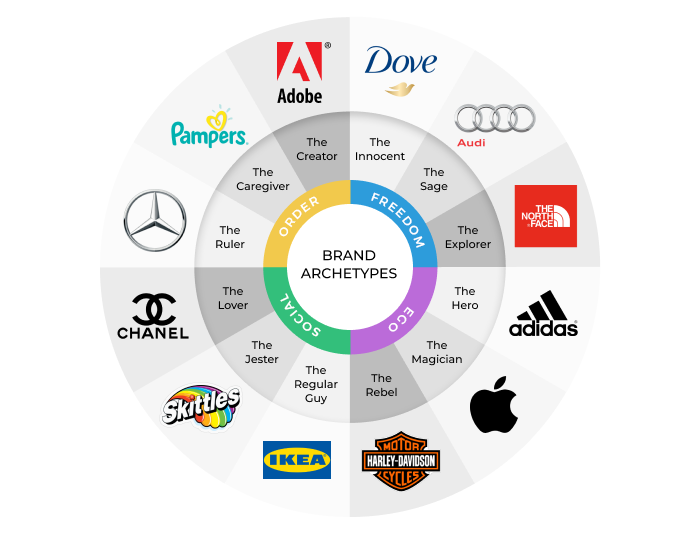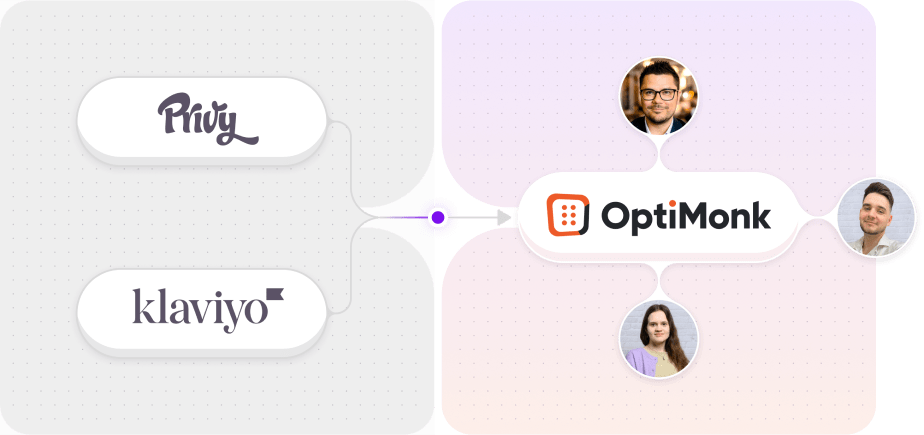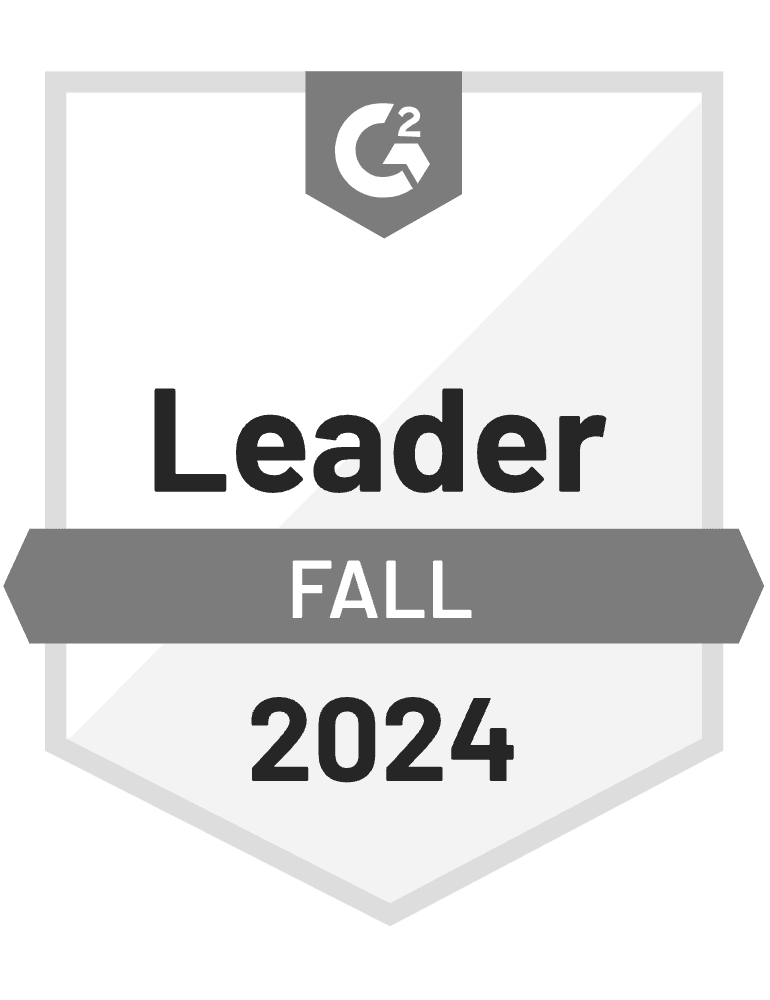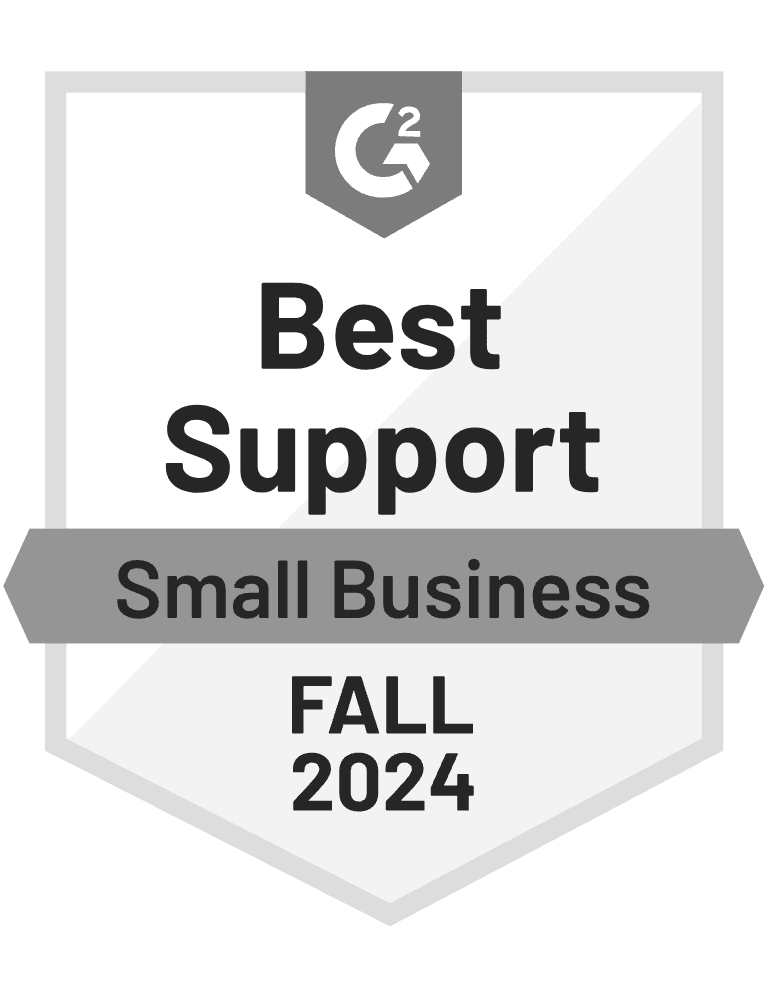- Blog
- How to Build a Brand Personality With Brand Archetypes
How to Build a Brand Personality With Brand Archetypes
-
Nikolett Lorincz
- Marketing
- 6 min read
Table of Contents
Did you know consumers don’t actually treat brands any different from how they interact with other people? In fact, once they find a brand they like, they would want to know more. And eventually, they build a deeper connection with those brands.
Just like with people, your attraction to brands is largely determined by their personality traits. When you ask why a person is fiercely loyal to one brand but hates a similar one, the answer usually comes down to the brand’s personality.
That’s why businesses started to use “brand archetypes.” They wanted to create a consistent and authentic personality for their brand.
And consumers respond to both qualities. A consistent brand image increases revenues by 33%, while 86% of consumers say that authenticity is a factor in their purchase decisions.
In this article, we’ll go over the theory of brand archetypes and practical tips to help you build your brand personality.
Let’s get right to it!
What are brand archetypes?
A brand archetype is a way of presenting a brand as a persona, thus making it more recognizable and relatable for consumers.
Creating a brand archetype that resonates with customers requires a lot of in-depth research. Large corporations spend millions on research and data collection to develop their archetypes.
The idea comes from the psychological theories of Carl Jung, a 20th-century Swiss psychiatrist, and psychoanalyst. He believed that people have one dominant trait that leads to typical behavioral patterns, desires, values, and motivations.
Jung compared the personalities of different people and he theorized that there are twelve foundational personality types:
- The Innocent
- Everyman
- Hero
- Outlaw
- Explorer
- Creator
- Ruler
- Magician
- Lover
- Caregiver
- Jester
- Sage
Whether you have a Hero or an Outlaw personality doesn’t only influence your outlook on the world and your actions, it also affects the way people perceive you.
The fact that people are hardwired to see archetypal personalities in both people and brands—makes archetypes a useful framework in the business world.
By aligning your brand with one of the universal patterns of personality, you can build a brand personality that connects with your target audience on a personal and emotional level.
We’ll get into each of the archetypes in a moment, but the image below shows examples of each archetype:

Brand archetype examples
As you’ll see while looking over our list, certain personality profiles fit particular brands better than others. See if you can recognize your brand in any of the twelve brand personality types.
1. The Innocent: Nestle Pure Life
The Innocent brand archetype is pure and simple. They strive to be good for both themselves and other people. And, ultimately—their goal is to be happy.
Nestle’s Pure Life water is a brand that fits within the Innocent archetype. They portray their purified water as Innocent by focusing on purity, optimism, and nature.
2. The Regular Guy or Gal: IKEA
The Regular Guy or Gal, also known as the Everyman archetype, is supportive and faithful—just like your ideal next-door neighbor.
This archetype has a need to belong and connect with other people. They prefer down-to-earth products and pastimes over anything that’s snobby or elitist. That’s because they never want to raise themselves above others.
IKEA is a great example of an Everyman brand. They offer home products for the average Joe. Not only can everyone buy their furniture, but they can also assemble it! (Perhaps with the help of a neighbor that’s a regular guy or gal.)
3. The Hero: Nike
The Hero personality has always been a symbol of courage and a source of inspiration. Just like those on cinema screens, Hercules and Odysseus were driven by a desire to help improve the world.
A Hero brand should try to be strong, confident, and honorable.
Nike’s famous slogan “Just do it,” is the embodiment of the Hero archetype. The brand consistently maintains an inspiring brand voice that empowers its customers to be courageous and daring.
4. The Rebel or Outlaw: Harley-Davidson
Almost everyone is drawn to the Outlaw archetype when it comes to both people and brands. (Although sometimes we don’t like to admit it.)
This archetype is a rebel at heart that breaks the rules and fights authority. They’re also admirable in their own way.
Harley-Davidson is a classic example. The brand engages its audience by creating commercials that challenge them to be different and bold.
5. The Explorer: Red Bull
An Explorer brand attracts customers who are constantly driven to get going and see the world. Those with an Explorer personality find fulfillment through discovery and new experiences.
Red Bull personifies the traits of restlessness, adventurousness, and ambitiousness. This marks them out as an Explorer brand.
Think about it: they regularly sponsor competitions in the most dangerous extreme sports. Their slogan: “Red Bull Gives You Wings,” inspires consumers to be adventurous.
6. The Creator: Lego
The Creator archetype is all about innovation and creativity. They want to create something with meaning and enduring value. Creator brands appeal more to creative or artistic audiences who value self-expression.
A Creator brand always experiments with new products and stands out from the crowd (and encourages their customers to do the same).
Lego is a great example of a Creator brand. Their simple building blocks give kids the opportunity to build anything they want. And Lego constantly introduces new sets and products that allow you to do more with the blocks.
7. The Ruler: Gillette
Brands that fit into the Ruler archetype help people keep control and maintain order. The Ruler personality is powerful and dominating.
Gillette has always exuded an air of domination and masculine energy. Furthermore, they promise that their tools will help their customers deal with chaotic facial hair through precision and control.
8. The Magician: Disney
Magician brands don’t like to be restrained by the possible. Rather, they strive to make dreams come true by creating something special.
Brands with a Magician personality tend to be visionary, charismatic, imaginative, and idealistic.
Disney is all about bringing magic and sparkles into our ordinary lives. They’re the perfect example of the Magician archetype.
9. The Lover: Chanel
This brand archetype isn’t shy. The Lover archetype is about true romance, idealism, passion, and intimacy.
They value relationships above all else, and their goal is to inspire closeness and love.
Creating desire has always been part of Chanel’s mission. Their consistently soft and sensual brand messaging makes them the paradigmatic Lover brand, whether it’s an advertisement in a glossy fashion magazine or a primetime TV spot.
10. The Caregiver: WWF
The Caregiver brand archetype creates the sense of a company that’s empathetic, nurturing, and selfless.
Their goal is to care for and protect others by providing emotional or physical support through their products.
The World Wildlife Fund (WWF) is a great example of how a Caregiver brand lives up to the good qualities of their archetype. They work selflessly towards protecting wildlife and the environment.
11. The Jester: Dollar Shave Club
The Jester personality is associated with people that like to have fun and possess a great sense of humor. These brands are light-hearted and mischievous but have a genuine desire to bring joy to the world.
Dollar Shave Club is a great example of the Jester archetype. They launched their brand with a hilarious YouTube video called “Our Blades Are F***ing Great.” Since then, all of their marketing has stayed consistent with this intentionally unserious tone.
12. The Sage: Google
A Sage brand is a knowledgeable and trusted source of information for others. And they truly want to help. Their goal is to increase the amount of wisdom and insight in the world, not just in themselves.
Sage brands are typically found in the educational sector—serving institutions such as schools and colleges. You can also come across the Sage archetype in the news and media industries.
Google is the perfect example of a Sage brand in our modern society. They have opened up a path to knowledge, truth, and guidance for people all over the world.
How to choose an archetype that fits your brand?
Choosing an archetype to align your brand with is a one-shot deal. Once you’ve established yourself as a Rebel brand, you can’t go back on it and become a Lover or Magician brand.
With that in mind, we need to circle back to what Jung originally meant by ‘archetype.’ He defined them as “universal collective patterns of the unconscious” that affect our self-image, our basic human desires, and our perceptions of others.
Let’s unpack this definition:
- Universal: All humans have some understanding of these twelve archetypes, wherever they are from and whenever they were born.
- Collective Patterns: You can’t shape or change an archetype through your unique interpretation of being an Explorer brand. Instead, you have to work within how we (as in all humans) collectively see the Explorer brand archetype.
- Of the Unconscious: People are not aware of the archetypes, but can connect with them on an unconscious level.
Since human beings are universally good at spotting archetypes, we’re also good at seeing when they don’t quite work. I’m sure you can think of someone who tried to be a Jester when they were really a Sage. It never quite came off, did it?
Brands also need to strike a balance between presenting a consistent personality and being too obvious. You can’t, of course, put “we’re a magician brand” up on billboards.
Instead, you have to develop a brand strategy that subtly aligns your image with one of the 12 brand archetypes.
Think back to the brand archetype examples we’ve looked at. The brands and archetypes fit together so well because all aspects of their business are consistent with that brand personality.
So, you’ve got to do the same thing. Start by thinking carefully about the nature of the business your brand is in:
- Does it suggest a connection with one of the archetypes better than another?
- What personality traits do your customers tend to value and aspire to?
- And, at the end of the day—which brand archetype feels right?
Three steps towards defining your brand personality archetypes
Once you’ve decided which personality archetype your brand is, take a look through the following three areas to make sure they all tell the same, consistent story.
1. Your slogan
Your slogan is the perfect place to establish a strong brand personality. Choose a slogan that matches your intended audience.
Brands with a positive personality should create an affirmative slogan.
However, brands that fit into a darker archetype framework, like the Outlaw, Ruler, or Hero archetype, have more arch, ironic slogans. Harley Davidson’s slogan, “Screw it, let’s ride,” is a great example of this.
2. Your marketing messages
People have an instinctive understanding of the archetypes because they express universal patterns.
That means you can’t fake it.
Your marketing, from commercials to Facebook ads to emails, needs to genuinely embody whatever primary archetype you’re going for.
If you’re trying to be an Everyman brand, none of your advertising copy should have long words or flashy sentences. You’ve just got to sound like how people really talk.
3. Your website
The design and content of your website needs to support your brand personality. Your style guide should reflect that image you want to portray.
A Ruler brand’s website should suggest that everything is under control, and also black and white. Think about how the New York Times’ website looks.
On the other hand, an Innocent brand should have a softer web presence that makes people forget about the problems of the world and take comfort in simple things.
Whenever you’re at a loss you can just think in terms of human personality. For example, if you’ve got a Lover brand, imagine a friend who embodies the Lover archetype. How would he or she prefer your website? What kinds of messages would resonate with them?
Brand communication throughout the customer lifecycle
As you develop a brand personality, make sure to install it in every step of the customer journey. Each and every interaction a customer has with your brand should reinforce your brand’s personality. In the ecommerce industry, these interactions are often called touchpoints.
Every touchpoint is an opportunity to express your brand’s archetype.
However, every touchpoint isn’t the same. They are parts of the customer journey.
It begins when people first become aware of your brand and, ideally, it never ends.
Customer journeys will be different depending on the company’s archetype. A Lover brand should introduce itself to potential customers differently than a Magician brand would.
Your brand should always take an interpersonal tone—which means avoiding bland corporate speak (and copy).
Just make sure the voice always fits with the brand archetype you’ve chosen.
Conversational popups, like those from OptiMonk, can help you build relationships with your customers and new visitors while building your brand. Take this example of a conversational popup:
It starts with a relationship-building question: “Which region do you like?”
Already, this (fictional) wine brand is establishing itself as the Caregiver archetype. The next screen: “Don’t forget your 10% off coupon code!” hits the same buttons of genuine concern for your needs.
Finally, the popup gets to the thank you stage. It shows personalized recommendations to increase sales.
A Ruler brand, however, will take a completely different approach at this stage of the customer journey. They would tend to ask “What region is best?,” rather than the one you like the most.
Conversational popups give you an opportunity to establish your image naturally.
Lessons learned
As we’ve seen, the best and most recognizable brands in the world have strong brand personalities. Unfortunately, that’s not the case for all brands.
Most brands lack a unique personality. Without that unique personality, a brand will unintentionally swerve between multiple archetypes and end up confusing everyone.
Building extraordinary brands requires you to choose one of the 12 brand archetypes and establish yourself within it. Whether your brand has a Lover personality or a Creator personality, people are wired to recognize it as such.
When it works, your target audience will form an intuitive connection.
Migration has never been easier
We made switching a no-brainer with our free, white-glove onboarding service so you can get started in the blink of an eye.

What should you do next?
Thanks for reading till the end. Here are 4 ways we can help you grow your business:
Boost conversions with proven use cases
Explore our Use Case Library, filled with actionable personalization examples and step-by-step guides to unlock your website's full potential. Check out Use Case Library
Create a free OptiMonk account
Create a free OptiMonk account and easily get started with popups and conversion rate optimization. Get OptiMonk free
Get advice from a CRO expert
Schedule a personalized discovery call with one of our experts to explore how OptiMonk can help you grow your business. Book a demo
Join our weekly newsletter
Real CRO insights & marketing tips. No fluff. Straight to your inbox. Subscribe now
Nikolett Lorincz
- Posted in
- Marketing
Partner with us
- © OptiMonk. All rights reserved!
- Terms of Use
- Privacy Policy
- Cookie Policy
Product updates: January Release 2025








